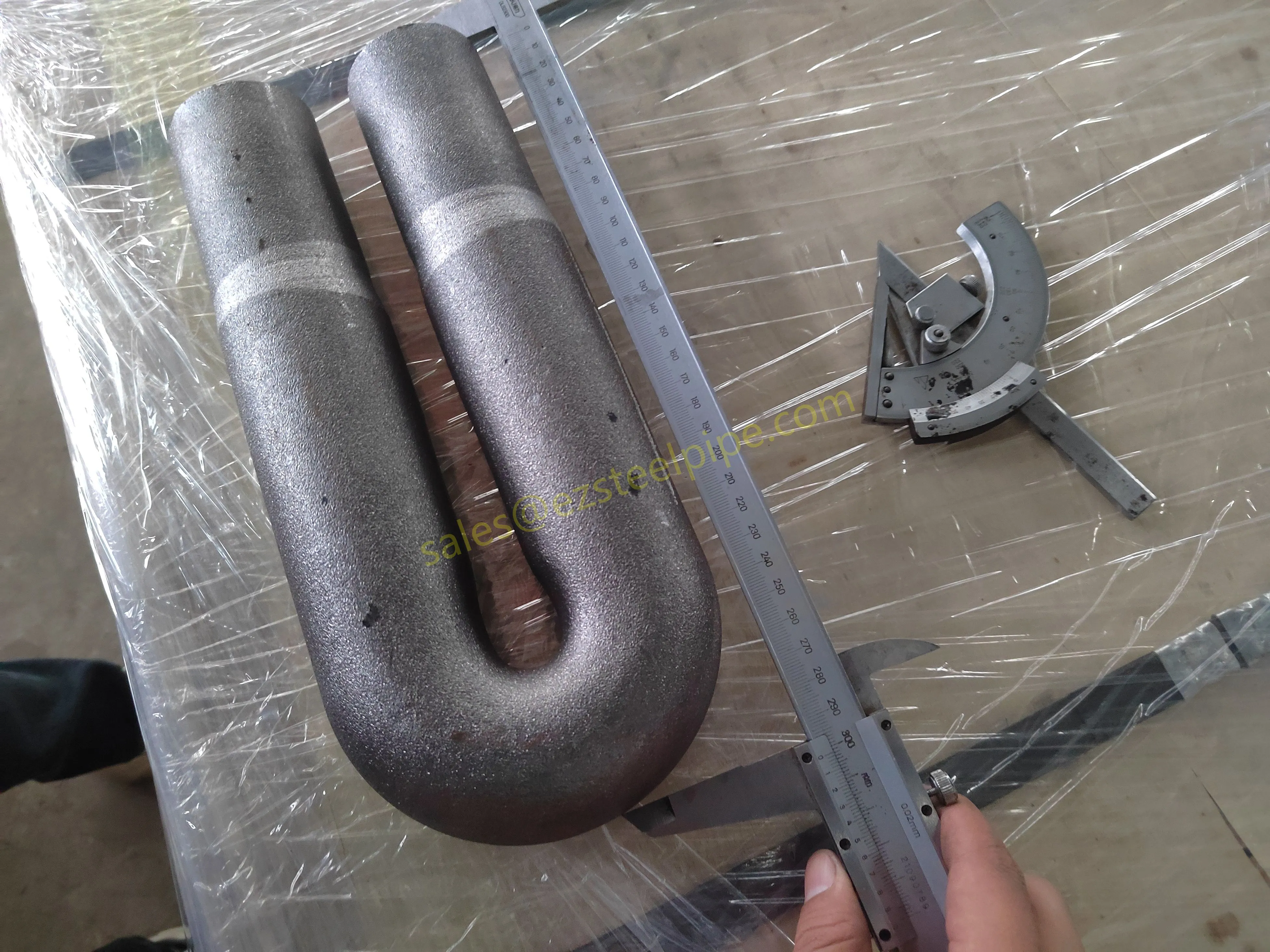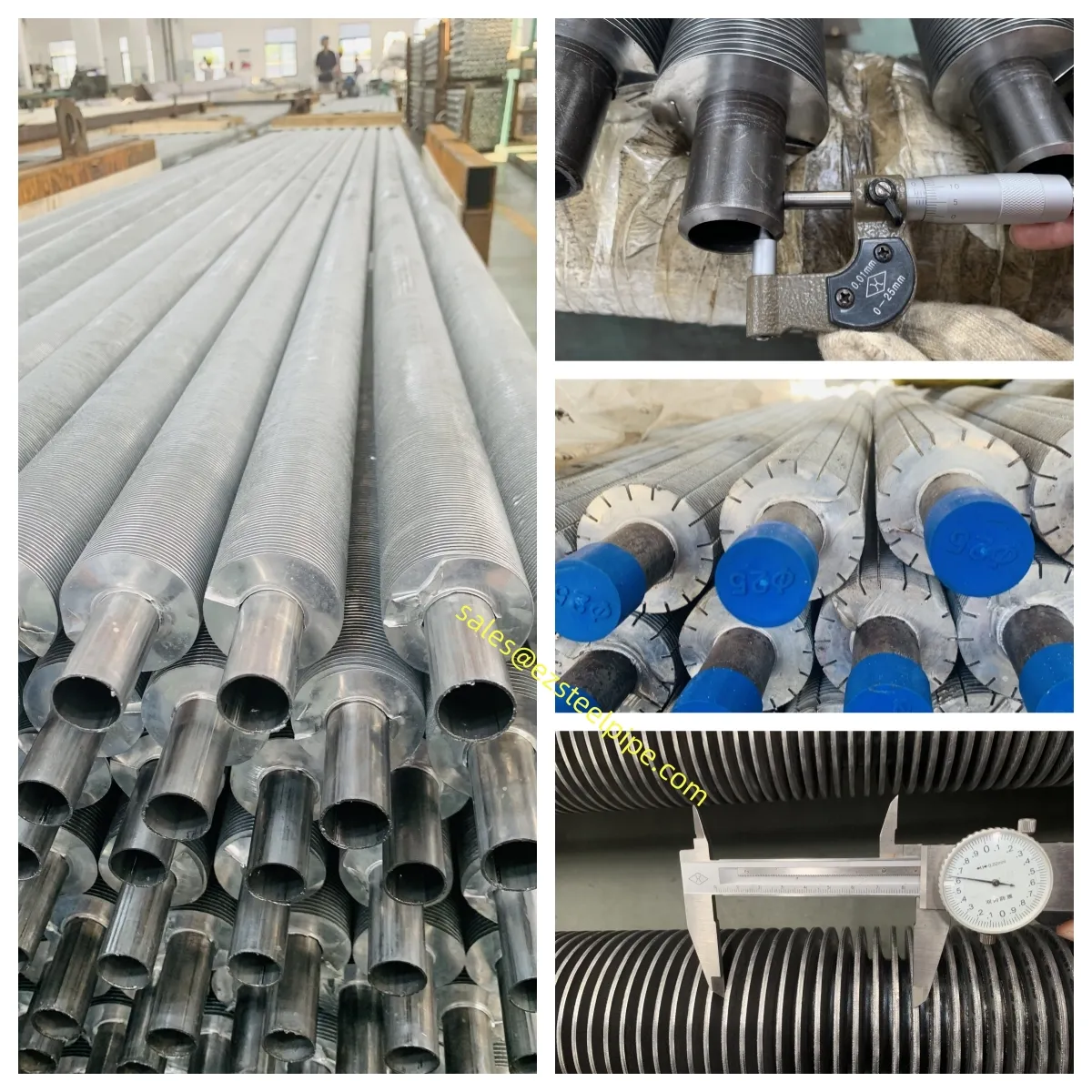 export@ezsteelpipe.com
export@ezsteelpipe.com +86 731 8870 6116
+86 731 8870 6116
Improving the heat efficiency of heat exchanger tubes involves optimizing design, material selection, manufacturing processes, and adherence to industrial standards. Below are key strategies, focusing on finned tube types, manufacturing enhancements, and relevant standards:


Improving the heat efficiency of heat exchanger tubes involves optimizing design, material selection, manufacturing processes, and adherence to industrial standards. Below are key strategies, focusing on finned tube types, manufacturing enhancements, and relevant standards:

Finned tubes increase surface area, enhancing heat transfer. Common types include:
- Extruded Finned Tubes: Fins are mechanically bonded to the base tube, ensuring high thermal conductivity. Suitable for high-temperature applications.
- Embedded Finned Tubes (G-Finned): Fins are grooved into the tube surface, improving mechanical strength and heat transfer.
- Welded Finned Tubes: Fins are welded (high-frequency or resistance welding) for high durability in corrosive environments.
- L-Finned Tubes (Wrapped Fins): Fins are wound and bonded to the tube, cost-effective for moderate temperatures.
- Studded Tubes: Used in boilers and furnaces, studs enhance turbulence and heat absorption.
- Enhanced Fin Geometry: Optimize fin height, thickness, and spacing (fins per inch, FPI) to balance heat transfer and pressure drop.
- Advanced Materials: Use high-thermal-conductivity materials (copper, aluminum, or bi-metallic combinations).
- Precision Bonding Techniques: Ensure strong metallurgical bonding (e.g., hot-dip galvanizing, laser welding) to minimize thermal resistance.
- Surface Treatments: Coatings (e.g., hydrophilic or hydrophobic) can improve condensation or reduce fouling.
- Additive Manufacturing (3D Printing): Allows complex fin geometries (e.g., helical, micro-fins) for tailored heat transfer enhancement.
- Turbulence Promoters: Internal rifling or twisted tape inserts disrupt laminar flow, improving convective heat transfer.
- Nanofluids: Suspending nanoparticles (Al₂O₃, CuO) in the working fluid enhances thermal conductivity.
- Porous Fins: Increase surface area and promote better fluid mixing.
Adherence to standards ensures reliability and performance:
- ASME B31.1/B31.3: For pressure tubing design and fabrication.
- ASTM A498: Standard for seamless finned tubes.
- ISO 13705: Covers refinery and petrochemical heat exchangers.
- TEMA (Tubular Exchanger Manufacturers Association): Guidelines for shell-and-tube heat exchangers.
- API 560: For fired heaters in refineries.
- EN 10204: Certification for metallic product quality.
- Regular Cleaning: Prevents fouling (mechanical brushing, chemical cleaning).
- Flow Optimization: Adjust fluid velocity to minimize fouling while maximizing heat transfer.
- Thermal Insulation: Reduces heat loss in high-temperature applications.
To maximize heat exchanger tube efficiency:
- Select the right fin type (extruded, welded, L-fin, etc.).
- Optimize manufacturing (bonding, materials, surface treatments).
- Apply advanced techniques (nanofluids, turbulence promoters).
- Follow industry standards (ASME, ASTM, TEMA, API).
- Implement proper maintenance and operational practices.

 Related Products
Related Products